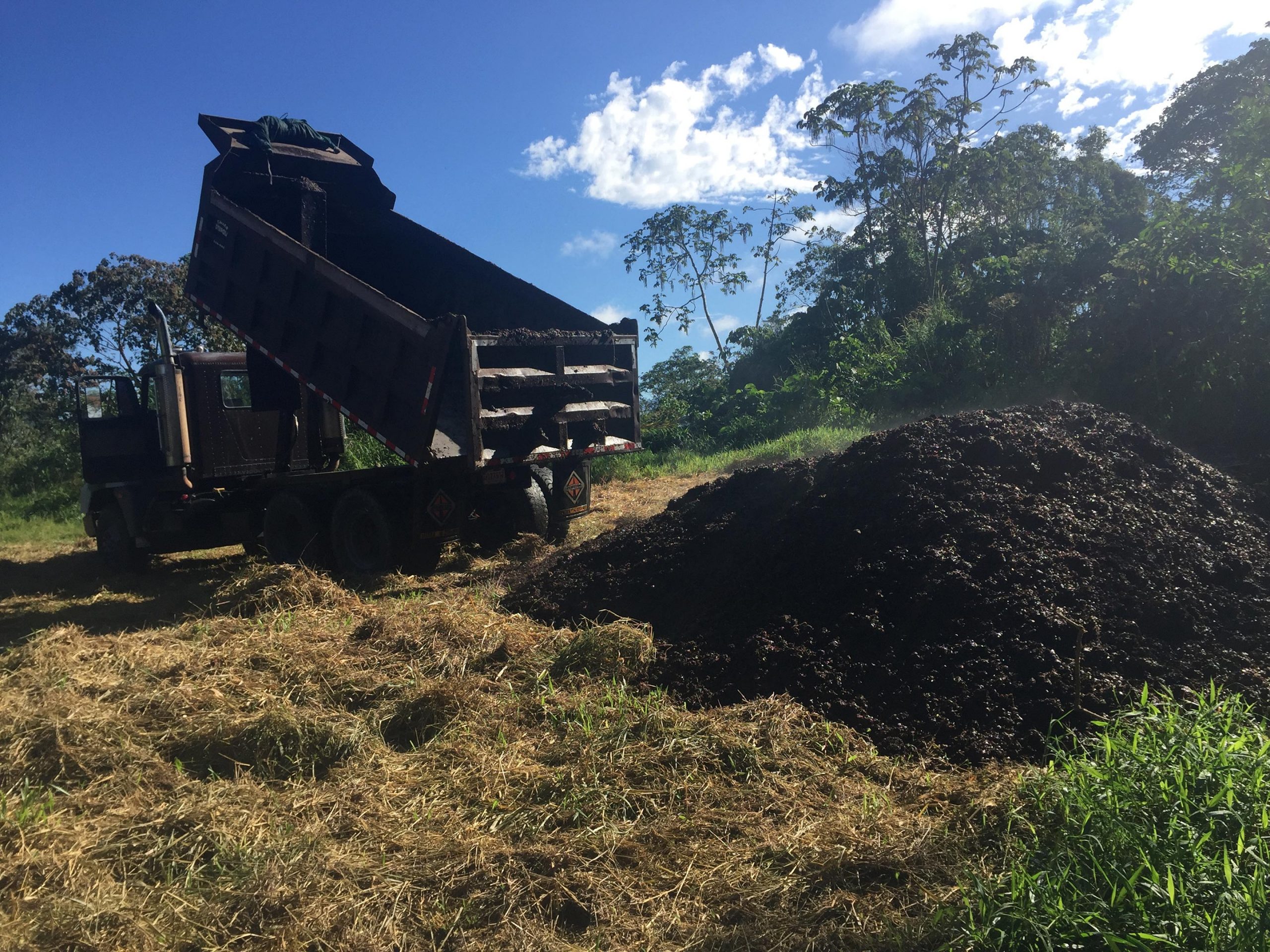

The forest that recovers 3 years after the coffee pulp was applied in the area. Credit: Rebecca Cole.
A new study finds that coffee paste, a residual product of coffee production, can be used to accelerate the recovery of tropical forests on post-agricultural land. The findings are published in the British Ecological Society Ecological solutions and evidence.
In the study, researchers from ETH-Zurich and the University of Hawaii spread 30 loads of coffee pulp over an area of 35 × 40m of degraded land in Costa Rica and marked an area of similar size without pulp. of coffee as a control.
“The results have been dramatic.” said Dr. Rebecca Cole, lead author of the study. “The area treated with a thick layer of coffee pulp turned into a small forest in just two years, while the control plot remained dominated by non-native grasses.”
After only two years, the area treated with coffee pulp had 80% canopy coverage, compared to 20% in the control area. The cover in the coffee paste area was also four times higher than in the control area.
The addition of a half-meter-thick layer of coffee paste removed the invasive pasture grasses that dominated the land. These herbs are often a barrier to forest succession, and their removal has allowed native, pioneering tree species, which have arrived as seeds through wind and animal dispersal, to quickly recolonize the area.

The researchers used 30 trucks of coffee pulp to begin regenerating the forest. Credit: Rebecca Cole.
The researchers also found that after two years, the nutrients, including carbon, nitrogen and phosphorus, were significantly increased in the area treated with coffee pulp, compared to the control. This is a promising finding, given that the former tropical farmland is often very degraded and the poor quality of the soil can delay the succession of forests for decades.
Dr Cole said: “This case study suggests that agricultural by-products can be used to accelerate forest recovery in degraded tropical lands. In situations where the processing of these by-products involves a cost to the agricultural industries, their use for restoration to meet the global reforestation objectives may be a ‘win-win’ scenario. ”
As a widely available and nutrient-rich waste, coffee paste can be a cost-effective forest restoration strategy. Such strategies will be important if we are to achieve ambitious global goals for restoring large areas of forest, such as those agreed in the 2015 Paris Agreements.
The study was conducted in Coto Brus County in southern Costa Rica on a former coffee farm that is being restored in the forest for conservation. In the 1950s, the region suffered rapid deforestation and the transformation of land into agriculture and coffee pastures, with forest cover reduced to 25% by 2014.

The difference between the coffee pulp and the control chart after 1 year. Credit: Rebecca Cole
In 2018, the researchers established two areas of approximately 35 × 40m, spreading the coffee pulp in a half-meter thick layer on one area and leaving the other as a control.
The researchers analyzed the soil samples for nutrients immediately before applying the coffee pulp and again two years later. They also recorded the species present, the size of the wood stalks, the percentage of forest cover and used drones to record the cover of the canopy.
Dr. Cole warns that, as a two-year case study, further research is needed to test the use of coffee pulp to help restore forests. “This study was conducted in a single large site, so more tests are needed to see if this strategy works in a wider range of conditions. The measurements we share are only from the first two years. Longer-term monitoring would show how the coffee pulp has affected the soil and vegetation over time. Additional testing may also assess whether there are any adverse effects from the application of coffee paste. ”
One limitation of the use of coffee pulp or other agricultural by-products is that its use is mostly limited to relatively flat and accessible areas where the material can be delivered and the risk of added nutrients being washed into nearby water basins. .
Regarding further research on the use of coffee pulp, Dr. Cole said: “We would like to extend the study by testing this method on a variety of degraded sites in the landscape. This concept could also be tested with other types of non-market agricultural products, such as orange peels.
“We hope that our study is an important point for other researchers and industries to look at how they could make their production more efficient by building links with the global restoration movement.”
Reference: “Coffee Pulp Accelerates Early Succession of Rainforests in Old Fields” by Rebecca J. Cole and Rakan A. Zahawi, March 28, 2021, Ecological solutions and evidence.
DOI: 10.1002 / 2688-8319.12054